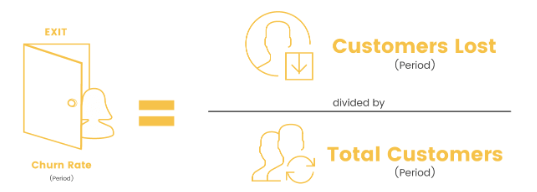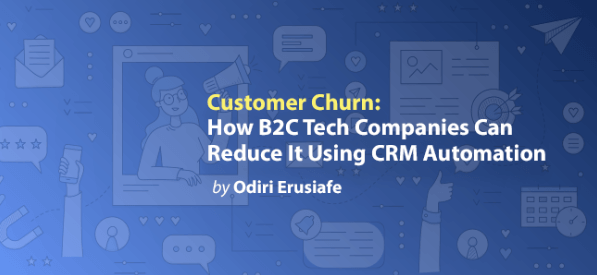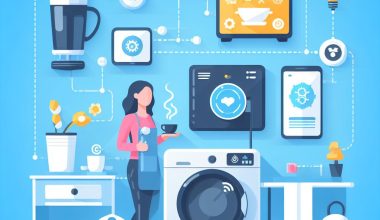Consider the following scenario: you have 30 chocolate bars at home but require 100 for a house party. You go to the store to buy 70 bars, but when you get home, you only have 15. To make matters worse, your housemate ate all but 13 of the 30 bars you had at home.
How would you feel if this happened to you?
Customer Churn rate is the measurement of customers you have lost over a certain period, as opposed to your total number of customers.
It is calculated by dividing the total number of customers gained in a certain time period by the total number of customers lost in the same time period.

Customer churn is an essential metric to monitor since it equates to lost revenue.
No business wants to lose even one customer after all the time and financial resources they have put into acquiring them in the first place, which is why it is important for every business to have a churn prevention strategy in place.
Why do customers churn?
Customer churn may happen for a number of reasons, including cost, value, demand, competition, negative experiences, and many others.
According to a PWC survey, even those who had previously had excellent customer service would stop doing business with a business after only one negative experience.
Some of these unpleasant experiences could be attributed to your product, pricing, the competitor offering a better service, bad customer service, and a host of other factors.
Sometimes clients leave because they no longer need your product or because of natural causes like death; these reasons cannot be controlled, but the reasons described above can be controlled.
Using Customer Journey Automation to Reduce Churn Rate & Drive Retention
No matter how great you believe your product or customer experience is as a business, you cannot leave your customer conversion to chance, especially if you are running a SaaS or tech b2c service.
Don’t assume your UX will improve your conversion chances. You must handhold your customers through every stage of their experience; from signup to purchase. However, your job does not end there; you must continue to give value in order for them to become repeat customers.
The 5 Best FinTech Companies in Nigeria (2022)
Most Nigerian fintech companies spend a lot of money on acquisition campaigns only to have customers drop off at stages like BVN and other forms of biometric verification. I wish I could get my hands on data on how many customers fintech companies lose each year, but no data can be found at the time of writing this piece.
If you choose to focus on acquisition and UX while ignoring onboarding, you may be surprised to learn that companies that are intentional with their onboarding journey, in which the customer receives emails, SMS, and push notifications as a guide to take the next action until they complete their purchase, convert more customers than you do.
Is a customer failing to validate BVN? An event should be triggered to inform the customer.
If a customer does not verify their phone number?
An event should be triggered.
You can guide your customer from signing up to purchasing with a well-planned series of automated communication drips.
Here are some examples of automation that should not be underestimated.
- Welcome email
A welcome email is the initial email message you send to someone who signs up or subscribes to your service, and it is usually one of a series of onboarding emails. Having an automated welcome email appears to be a routine that every firm follows these days. The content of your welcome email, on the other hand, is more important than having an automatic welcome email.
A well-written welcome email not only informs customers about your products and services but also sets the tone for future interactions. So you may consider making it short, fun, and precise.
- Onboarding journey
When you onboard new customers, you must introduce them to how your company operates, and solid automated customer onboarding improves the overall process. It not only assists consumers in understanding the products and services you provide, but it also minimizes customer drop-off.
Steps to consider when automating your customer onboarding
- Define your goals.
- Map out your consumer journey.
- Use current data to determine where clients are most likely to churn.
- Specify the steps in the customer journey you wish to automate.
- Create your events, workflows, and content
- Test your workflow.
- Start your campaign.
Benefits of automating customer onboarding journey
- Speeds up the onboarding process.
- Improves the number of customers who use your product.
- Reduces customer churn.
- Enhances customer experience.
- Reduces your operational cost.
- Builds loyalty.
3. Customer Reactivation Campaigns
Winning back customers is very important since it generates revenue and grows your active customer base.
Automating your reactivation campaigns relieves the burden of manually segmenting and screening customers which are the issues you will face when sending one-time messages to reactivate.
You can adapt automation to develop appropriate reactivation campaigns that move your customers from the inactive to the active segments.
One important technique for developing a reactivation campaign is to identify and create segments depending on how long they have been dormant. Customers who have been inactive for three months may have a different workflow and type of content than customers who have been inactive for six to twelve months.
4. Payment Reminder
I recently signed up for a health insurance plan in which I am automatically deducted monthly, and my first experience was bittersweet. I received an email reminding me that my plan will be renewed in three days, so I funded my bank account. On the day of my renewal, no debit was made to my account, and the next day, I received an email informing me that I had been suspended.
The brand did well to remind me twice before my due date, and even though they ruined it by not passing the debit and suspending me from their service, knowing that my repayment was approaching prompted me to fund my bank account; if they hadn’t reminded me, I wouldn’t have remembered to fund my account.
Your customers are busy, and you can’t expect them to remember their payment date every time, which is why automated payback reminders are critical. Every subscription service, and especially credit card firms, should feature a payment reminder.
Did I mention that I contacted the health tech company to share my knowledge of how to improve the customer experience through CRM automation because I anticipated them to have a trigger when a payment is unsuccessful so that the customer is notified and provided another method of payment? Yes, I did.
Conclusion
Automation does not only lower your churn rate but also improves customer experience and lifecycle, giving you a competitive advantage over other firms that do not have one in place.
About Writer
Odiri Erusiafe is a creative and data-driven marketing professional with progressive experience in content, product, and CRM marketing in the African Fintech industry.






